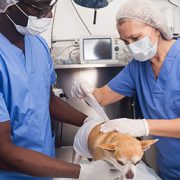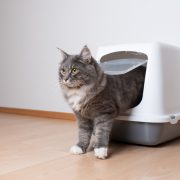Remote consulting: Sleeping and resting respiratory rates in dogs and cats with medically-controlled left-sided congestive heart failure
Sleeping and resting respiratory rates in dogs and cats with medically-controlled left-sided congestive heart failure
Published 19 August 2020
Porciello, F. et al. (2016) Sleeping and resting respiratory rates in dogs and cats with medically-controlled left-sided congestive heart failure. The Veterinary Journal, 207, pp. 164-168. https://doi.org/10.1016/j.tvjl.2015.08.017
This paper reports on a multicentre prospective observational study in which owners of 51 dogs and 22 cats were asked to count the sleeping (SRR) and resting respiratory rate (RRR) of their animal on 8-10 occasions over at least four days. All the animals had been diagnosed with left-sided congestive heart failure (CHF), and were on treatment at the time. While the majority of the animals had no co-morbidities, those that did, including large airway disease, osteoarthritis and endocrine disease, were not excluded from the study. However, dogs with primary respiratory disorders, such as acute pneumonia; primary pulmonary vascular disorders, such as pulmonary thromboembolism; severe heartworm disease, or severe metabolic derangements such as heat stroke, were excluded.
In dogs the median SRR was 20 breaths/min (range 7–39 breaths/min); eight dogs were ≥25 breaths/min and one dog only was ≥30 breaths/min. In cats the median SRR was 20 breaths/min (range 13–31 breaths/min); four cats were ≥25 breaths/ min and only one cat was ≥30 breaths/min. In both species SRR remained stable during collection with little day-to-day variability
In both species the RRR was slightly higher with the median canine RRR of 24 breaths/min (12–44 breaths/min), and the median feline RRR of 24 breaths/min (15–45 breaths/min).
The authors conclude that most dogs and cats with stable, medically controlled CHF have SRR <30 breaths/min and relatively small day-to-day changes in SRR in the home environment.
This may provide a relatively simple way for straightforward way for clients to monitor animals at home and provide additional information about whether animals need further assessment or changes to medication.





Leave a Reply
Want to join the discussion?Feel free to contribute!